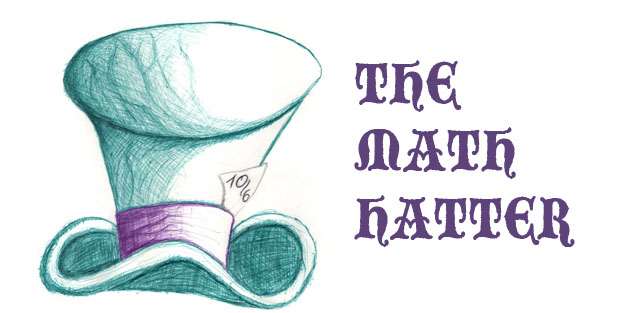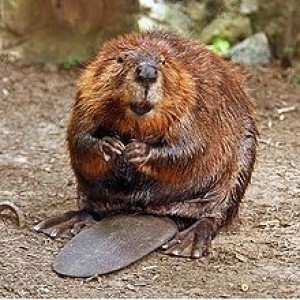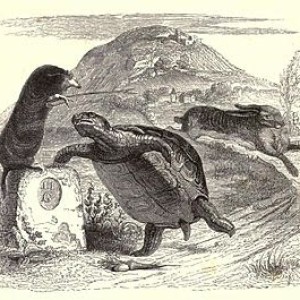I don’t know about you but I’ve always had a thing for bathtub problems. I know they are a bit out of fashion and may be responsible for a lot of despair among students of past generations but I always liked them for their ingenuity. Of course, these problems can be adapted to different levels of difficulty but I think the best of them are those who feature multiple faucets.They seem to be somewhat universal if one believes this example taken from the Jiu Zhang Suan Shu, a mathematical text from ancient China.(1)
Problem 1.
A cistern is filled through five canals. Open the first canal and the cistern fills in 1/3 day; with the second, it fills in 1 day; with the third, in 2.5 days; with the fourth, in 3 days, and with the fifth in 5 days. If all the canals are opened, how long will it take to fill the cistern?
It looks tricky, right ? Well, before trying to tackle this chinese conundrum, we shall try this one which features only two faucets.
Problem 2.
A bathtub is equipped with 2 faucets. If you use the one installed in the front, you can fill up the tub in 20 minutes but if you use the one in the back it will take you 30 minutes. How long does it take to fill up the tub if both faucets are open ?
Hold on, hold on ! You know that 25 minutes can’t be the answer. How could it take more time with both faucets than it took with the first one ? So forget the average…for the moment. Getting to the right answer is not that hard and here is one way to do it. How many bathtubs would the front faucet fill up in 1 hour ? 3 of course, and the second one 2. Working together, that’s a total of 5 tubs in 60 minutes which of course is the same as 1 tub 12 minutes. So 12 minutes is the answer to the problem. The difficulty was removed when we changed the information from amount of time per bathtub to amount of bathtubs per hour. Let’s see that shift in action once again with this third problem.
Problem 3.
Cheever the beaver can build a dam in 3 hours, his older brother Tim can do it in 2 hours but his younger brother Tom(2) needs 4. How long will it take to build the dam if the three brothers work together ?
Cheever the beaver.
Let’s work this one out by computing how much is built by each beaver in 1 hour. This is quite trivial, Cheever builds one third of the dam in one hour, Tim one half and Tom one fourth. Together they build 1/3 + 1/2 + 1/4 = 13/12 of the dam in one hour. Then comes basic proportionnality. If it takes one hour to build 13/12 of the dam then it takes 12/13 of an hour to build one full dam. That’s a little bit more than 55 minutes. What we did here is quite simple : we took the reciprocal(3) of each speed, added them and took the reciprocal of the result.
With this method, you should now be able to solve Problem 1 (answer on demand) but before moving on to a trickier example, let’s try to understand better what happens when we take the reciprocal of a rate. There are always two opposite ways to give a speed or a rate. If you’re driving in New York City or if you’ve seen a TV ad for a car, you know about fuel consumption. Besides the model or the color, fuel consumption is nowadays one of the most important features of a car (for economic or ecological reasons) and it is usually given in miles per gallon. Finding a good car has become a quest for that magic number : 40 mpg. It tells you how many miles you should be able to drive with one gallon of gasoline(4). But fuel ecomomy could also be expressed by saying how much fuel you will need to drive one mile and that’s actually how they do it in France, except that they give the number of liters of gasoline for 100 kilometers(5). Of course both rates are rates of proportionnality, the first tells you how many miles you should be able to drive if you put 6 gallons in the tank, the other tells you how much gas you should put in the tank if you plan to drive 300 kilometers.
 Miles per Gallon vs litres aux 100 km.
Miles per Gallon vs litres aux 100 km.
There is no major difference here, changing from one to the other won’t make gas any cheaper. However, changing the beavers’ speeds from hours per dam to dams per hour allowed us to find the solution easily. Let’s apply this idea to this new problem.
Problem 4.
You ride your bike uphill at the average speed of 14 mph and then come down by the same road at 42 mph. What is your average speed for the roundtrip ?
The average of 14 and 42 is 28. But that’s not the answer to the problem. It would be if the problem had said « you ride your bike for an hour at the average speed of 14 mph and for another hour at 42 mph ». It that case you ride 56 miles in 2 hours which gives an average of 28 mph. It works because the duration of both segments of the trip are the same. But in the original problem, it is the distance covered that is the same for both segments, not the duration. You may think that some information is missing because we don’t know the distance covered and therefore can’t compute the time it takes for the round trip. Well, as we will see shortly, the average speed is actually independent from the distance covered, as long as this distance is the same for both parts of the trip.
As you well know a speed measures distance over time, often expressed with the formula V=D/T, a ratio where the distance is the numerator and time is the denominator. The speeds in Problem 4 give us two such formulas : Vu=D/Tu and Vd=D/Td where Vu and Vd are the uphill and downhill speeds, Tu and Td the corresponding durations and D the distance covered each time.
As you can see, the two fractions don’t have the same denominator, and nobody likes fractions with different denominators. So what shall we do about it ? Well, as we did for the beavers’ speeds, we could take the reciprocal of the speeds : Tu/D and Td/D. These two have a common denominator. Once again, to be really clear, and link it with the fuel consumption analogy, it means that instead of saying how much we ride in 1 hour we might just say how long it takes to cover 1 mile : 1/14 hpm(6) instead of 14 mph. And that does the trick because one mile uphill and one mile downhill are one and the same mile. So if it takes 1/14 th of an hour for 1 mile uphill and 1/42 th of an hour for the same mile downhill, that means the round trip will be covered at the « antispeed(7) » of 1/14 + 1/42 hour for 2 miles or (1/14 + 1/42)/2 hour for 1 mile or 1/21(8) hpm. Then, taking the reciprocal again gives us an average speed of 21 mph. This result is much closer to 14 than 42 and, if you think about it, it makes sense because the average speed depends on the time spent on the road and when the distance is the same a bigger part of the trip is spent going slow than going fast, thus lowering the average.
Let’s review what we did here. The result (1/14 + 1/42)/2=1/21 simply means than 1/21 is the average of 1/14 and 1/42 or, as mathematicians would say, the arithmetic mean(9). In other words, the average speed in our problem is the reciprocal of the arithmetic mean of the reciprocals of the two speeds(10). That one is called the harmonic meanand is thus expressed by the formula : 1/V = (1/V1 + 1/V2)/2.
A bit of algebra shows that it can also be written as 2/V=1/V1 + 1/V2 or even V=2*V1*V2/(V1+V2).
The last one makes it easier to compute the mean as we can check that 2*14*42/(14+42)=21.
The other one will help us discover an interesting fact with this last problem.
Problem 5.
Harry the hare starts a race at a very leisurely pace of 3 mph. How fast should he go during the second half of the race if he wants his average speed for the whole race to be twice the speed of the first half ?
The Tortoise and the Hare
Since both segments of the race are of the same length, we can use the formula for the harmonic mean, that is 2/V=1/3 + 1/V2. But we also know that V=2*3=6 and consequently we get 2/(2*3)=1/3 + 1/V2.
This in turn gives 1/3 = 1/3 + 1/V2 or 0=1/V2. And that’s where Harry hits a wall because no number has 0 for its reciprocal. If V2 gets bigger and bigger 1/V2 will get ever closer to 0 but never reach it. An antispeed of 0 hpm means that his speed should be infinite…
In other words, if the hare were to hop on a photon(11) for the second half of the race, his average speed for the race could never be twice the average speed for the first half. Rien ne sert de courir…
(1) The Nine Chapters on the Mathematical Art appeared around 200 BCE and contained many methods of problem solving in arithmetic and geometry.
(2) Cheever’s mother had three sons : Tim, Tom and ?
(3) Two numbers x and y are reciprocal if their product x*y equals 1, such as 0.5 and 2 or 0.1 and 10. For fractions it is very simple. The reciprocal of a/b is b/a because (a/b)*(b/a)=(ab)/(ab)=1.
(4) On the highway of course, at a maximum speed of 45 mph, no wind and no AC.
(5) 1 US gallon is about 3.8 liters and 1 mile is 1.6 kms. So 40 mpg is 64 km for 3.8 liters or around 6 litres aux 100.
(6) In that case, it would be more convenient to use minutes per mile (mpm) because the numbers would be more manageable but it doesn’t matter.
(7) Why antispeed ? Well, for speeds, the bigger the number the faster you go. But here the opposite is true. As an example 0.25 hpm is twice as fast as 0.5 hpm.
(8) Rusty fractions ? Here goes : (1/14 + 1/42)/2=(42/588 + 14/588)/2=(56/588)/2=28/588=1/21.
(9) We already encountered the arithmetic mean (and the geometrical mean) in our story about interests.
(10) Read it again, there just isn’t any other way to put it.
(11) A particle of light travelling at the crazy speed of 186,000 miles per second, the maximum for any material object in our universe.
About the Author :
Originally from Brittany, David Soquet graduated from the Université de Rennes, before becoming a math teacher. After honing his skills at a middle school near Paris, he joined the Lycée Français in 2008. He is the father of two children and is passionate about the history of science. In his teaching, he tries to balance the rigor required by mathematics with humor and discovery. He is very curious and his interests range from modular origami and norse mythology to Fritz Lang’s cinema and music.




